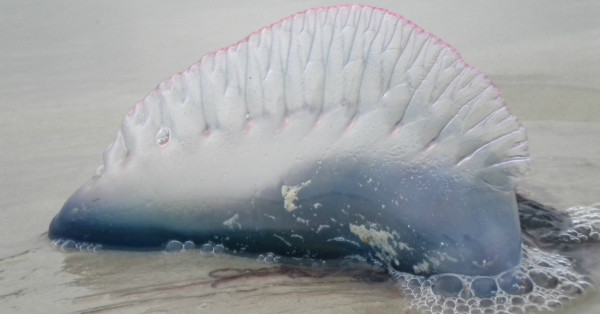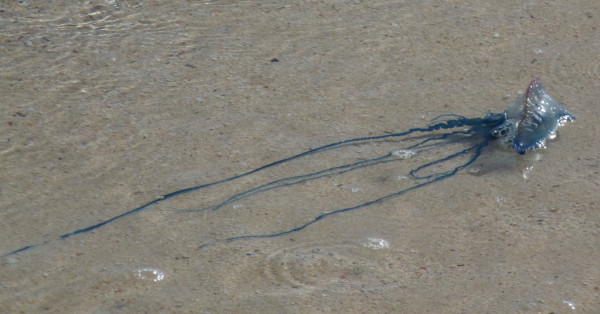
The Realities Of The Portuguese Man-O’-War Are Fascinating
The Portuguese man-of-war is one of the most dangerous creatures in the sea. Though its stings are rarely fatal to fully grown adults, the touch of its tentacles is one of the most excruciatingly painful experiences a person can have. Additionally, the stingers remain viable even on dead men-of-war, so one washed up on a beach can do as much damage as one you encounter in an ocean. Nonetheless, they are extremely interesting creatures that are well worth studying from a distance.
What a Man-of-War Is
A man-of-war, despite its appearance, is not a type of jellyfish. It is in fact not a single animal at all, but rather a colony of genetically identical organisms that work together to achieve their goals. National Geographic notes that the four polyps that make up each man-of-war have highly specialized tasks.

Organisms
The most visible part of the colony, which is often called the sail, is a gas-filled bladder that usually sits above the ocean surface. This is usually a blue color, but it may display pink or violet shading. It is this section that gives the man-of-war its name, which is the same as that of the Portuguese sailing vessel it is said to resemble.
The second part that humans encounter is the polyp that forms the tentacles. This is the part of the organism that carries the venom-filled nematocysts that the man-of-war uses to kill fish and other small creatures for food as well as creating tentacles that draw this food into the digestive organs. The digestive organs and the reproductive system of the man-of-war are also creatures in their own rights.
What It Can Do
A man-of-war is actually a very vulnerable and unthreatening creature. Despite its fearsome venom, it is not a great hunter because it has no means of active propulsion. Colonies of the creatures form regularly, and each legion can have over 1,000 members, but all of them are dependent on wind and wave motions to move them into range of food. The only way they have to avoid threats on the surface is to deflate their air bags and briefly submerge, but this prevents them from using wind power to move to a safer region.

Reach
Because it cannot move much, the man-of-war has developed a long reach. The organism that forms the tentacles usually grows to around 30 feet long, though it may be a little as 8 feet long or in some cases up to 165 feet. This means that if you see a man-of-war clearly and you are in the water, you need to watch out!
Risks
The man-of-war cannot spit, fire, or otherwise project its venom, so it is harmless unless you touch its tentacles. As soon as you make contact with even a small part of the surface, the coiled, barbed tubes known as nematocysts activate and inject a huge quantity of venom. This causes what victims describe as one of the most intense forms of pain in the world, and it certainly raises welts and causes skin issues. Adding fresh water to nematocyst stings causes any residual cells to release more poison, in the same way that jellyfish stings do, so don’t ever wash this type of sting with fresh water before bathing with saline or seawater.
The Portuguese man-of-war is one of the most intriguing creatures on the planet, as it is a cooperative rather than an individual. Although they lack independent movement, these creatures deserve their fearsome reputation because of their other adaptations for survival. To find out more about animals, and what you can do to help, check out The Animal Rescue Site today.